liverleaf wintergreen
(Pyrola asarifolia ssp. asarifolia)
Conservation • Wetland • Description • Habitat • Ecology • Use • Distribution • Taxonomy
Description |
||
Liverleaf wintergreen, also called pink pyrola, is common, low-growing, late spring wildflower. It occurs throughout Canada. In the United States it occurs in the northeast, in the upper Midwest, and throughout the west. In Minnesota it is common in the northeast and north-central regions, less common in the northwest, central, and metro regions, and mostly absent from the remainder of the state. It is found in deciduous and coniferous forests, swamps, bogs, and peatlands, and on stream banks. It grows in moist soil. It blooms from June to July, peaking the first week of July. Liverleaf wintergreen is a 6″ to 12″ (1.5 to 3.0 dm) tall, erect, perennial forb that rises on a single aerial stem from a shallow, horizontal, underground stem (rhizome). The rhizome is slender, long, and branching. The stem is very short, erect, unbranched, and hairless. The leaves are crowded and form a radiating cluster (rosette) in the spring. They are consistently described in the literature as “nearly basal” after Gleason and Cronquist (1991). This suggests that they are clustered along the plant’s very short solitary stem. Each leaf is on a ⅝″ to 2 9⁄16″ (15 to 65 mm) long stalk (petiole). The petiole is hairless, channeled above, and usually as long as the leaf blade. The leaf blades may be round, kidney-shaped, egg-shaped (widest near the base), or elliptic (widest in the middle). They are 1″ to 2¾″ (24 to 71 mm) long, ½″ to 2″ (13 to 49 mm) wide, rounded to tapered at the base, and broadly or narrowly angled at the tip. They are leathery in dry habitats, soft in moist habitats. The upper surface is dark green, shiny, and hairless. The lower surface is lighter green and somewhat purplish, dull, and hairless. The margins are untoothed or have shallow, rounded teeth. The inflorescence is a loose, unbranched cluster (raceme) of 4 to 25 flowers on the upper half of a 6″ to 12″ (1.5 to 3.0 dm) long inflorescence stalk (peduncle). The peduncle is unbranched and hairless. It has 1 to 3 small, scale-like leaves (bracts). The bracts are egg-shaped, ¼″ to ⅝″ (7 to 16 mm) long, ⅛″ to 3⁄16″ (2.5 to 5 mm) wide. Each flower nods downward at the end of a ⅛″ to 5 ⁄16″ (4 to 8 mm) long flower stalk (pedicel). At the base of each pedicel there is a linear lance-shaped bractlet. The bractlet is usually as long or longer than the pedicel it subtends. The flowers are ⅜″ to ⅝″ (10 to 15 mm) wide. There are 5 sepals, 5 petals, 10 stamens, and 1 style. The sepals (together the calyx) are green and are fused at the base then separated into 5 triangular, 1⁄16″ to ⅛″ (1.4 to 3.5 mm) long lobes with narrowly pointed or tapered tips. The margins are whitish or pinkish with thin, translucent (membranous) margins. The petals are widely spreading, inversely egg-shaped (widest at the tip) to round, 3⁄16″ to ⅜″ (4.8 to 9.1 mm) long, and ⅛″ to ¼″ (2.9 to 6.0 mm) wide. They are white or pinkish at the base, rose-red or purplish-red at the tips. The stamens do not protrude beyond the petals. The style is pale green, long, and curved, and conspicuously protrudes below the corolla. The fruit is a flattened globe-shaped, ⅛″ to 3 ⁄16″ (4 to 5 mm) long, ¼″ to 5⁄16″ (6 to 8 mm) wide seed capsule. The sepals and style persist with the fruit. |
||
Height |
||
6″ to 12″ (1.5 to 3.0 dm) |
||
Flower Color |
||
White or pink to purplish-red |
||
Similar Species |
||
Habitat |
||
Moist to dry. Deciduous and coniferous forests, swamps, bogs, peatlands, stream banks. |
||
Ecology |
||
Flowering |
||
June to July |
||
Pests and Diseases |
||
|
||
Use |
||
|
||
Distribution |
||||
|
Sources |
|||
| 10/10/2023 | ||||
Nativity |
||||
Native |
||||
Occurrence |
||||
Common |
||||
Taxonomy |
|||
| Kingdom | Plantae (Plants) | ||
| Division | Tracheophyta (Vascular Plants) | ||
| Subdivision | Spermatophytina (Seed Plants) | ||
| Class | Magnoliopsida (Dicots) | ||
Order |
Ericales (heathers, balsams, primroses, and allies) | ||
Family |
Ericaceae (heath) | ||
| Subfamily | Pyroloideae | ||
| Tribe | Pyroleae | ||
Genus |
Pyrola (wintergreens) | ||
| Species | Pyrola asarifolia (bog wintergreen) | ||
Family Subfamily |
|||
Subordinate Taxa |
|||
|
|||
Synonyms |
|||
Pyrola asarifolia var. incarnata Pyrola asarifolia var. ovata Pyrola asarifolia var. purpurea Pyrola californica Pyrola cordata Pyrola elata Pyrola rotundifolia ssp. asarifolia Pyrola rotundifolia var. asarifolia Pyrola uliginosa Pyrola uliginosa var. gracilis |
|||
Common Names |
|||
bog wintergreen liverleaf wintergreen pink pyrola pink wintergreen |
|||
Glossary
Bract
Modified leaf at the base of a flower stalk, flower cluster, or inflorescence.
Bractlet
A small, often secondary bract within an inflorescence; a bract that is borne on a petiole instead of subtending it; bracteole.
Calyx
The group of outer floral leaves (sepals) below the petals, occasionally forming a tube. Plural: calyces.
Elliptic
Narrowly oval, broadest at the middle, narrower at both ends, with the ends being equal.
Linear
Long, straight, and narrow, with more or less parallel sides, like a blade of grass.
Pedicel
On plants: the stalk of a single flower in a cluster of flowers. On insects: the second segment of the antennae. On Hymenoptera and Araneae: the narrow stalk connecting the thorax to the abdomen: the preferred term is petiole.
Peduncle
In angiosperms, the stalk of a single flower or a flower cluster; in club mosses, the stalk of a strobilus or a group of strobili.
Petiole
On plants: The stalk of a leaf blade or a compound leaf that attaches it to the stem. On ants and wasps: The constricted first one or two segments of the rear part of the body.
Raceme
An unbranched, elongated inflorescence with stalked flowers. The flowers mature from the bottom up.
Rhizome
A horizontal, usually underground stem. It serves as a reproductive structure, producing roots below and shoots above at the nodes.
Scape
In plants: An erect, leafless stalk growing from the rootstock and supporting a flower or a flower cluster. In insects: The basal segment of the antenna.
Sepal
An outer floral leaf, usually green but sometimes colored, at the base of a flower.
Spreading
Extending nearly horizontal.
Visitor Photos |
|||||
Share your photo of this plant. |
|||||
| This button not working for you? Simply email us at info@MinnesotaSeasons.com. Attach one or more photos and, if you like, a caption. |
|||||
Luciearl |
|||||
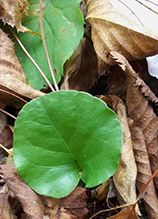 |
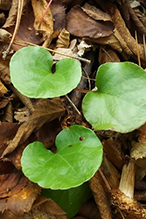 |
||||
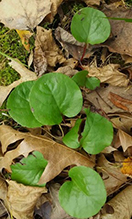 |
 |
||||
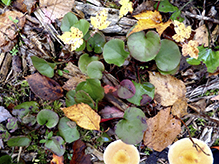 |
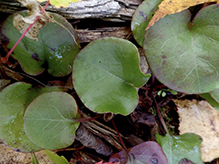 |
||||
 |
|||||
MinnesotaSeasons.com Photos |
|||||
|
|||||

Slideshows |
||

Visitor Videos |
|||
Share your video of this plant. |
|||
| This button not working for you? Simply email us at info@MinnesotaSeasons.com. Attach a video, a YouTube link, or a cloud storage link. |
|||
Other Videos |
|||
| Pyrola asarifolia Kawasaki FMG |
|||
About
Aug 19, 2018 |
|||
| [E] Pyrola asarifolia / 紅花一薬草(ベニバナイチヤクソウ )\ North Local Tube |
|||
About
Jul 2, 2018 ツツジ科 / Ericaceae イチヤクソウ属 / Pyrola |
|||

Visitor Sightings |
|||||
Report a sighting of this plant. |
|||||
| This button not working for you? Simply email us at info@MinnesotaSeasons.com. Be sure to include a location. |
|||||
| Luciearl 10/8/2023 |
Location: Fairview Twp |
 |
|||
| Luciearl 10/10/2021 |
Location: Cass County |
 |
|||
| Luciearl 9/28/2020 |
Location: Cass County |
 |
|||
MinnesotaSeasons.com Sightings |
|||||

Created: 10/29/2020
Last Updated:
